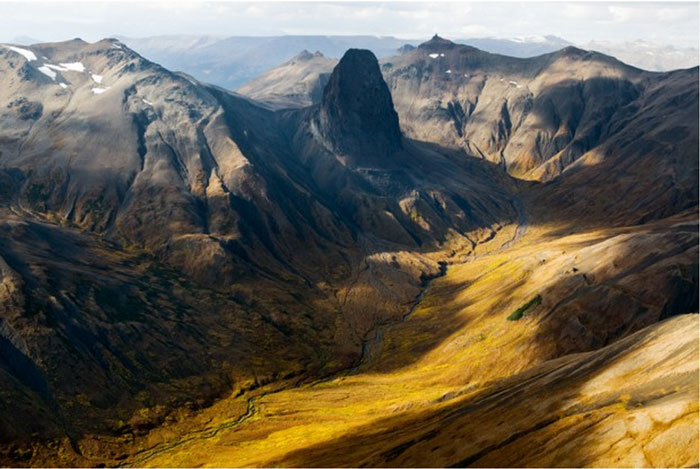
Canada’s Sacred Headwaters, the shared birthplace of three great salmon rivers. Image © Paul Colangelo
NANPA’s Philip Hyde Environmental Photography Grant Brings Tahltan Territory to Those Who Would Never See it in Person.
by Paul Colangelo
The Sacred Headwaters in northern British Columbia is the shared birthplace of three great salmon rivers—the Stikine, Skeena and Nass. It is also the traditional territory of the Tahltan First Nation, and it supports a vast ecosystem known for large numbers of moose, caribou, sheep, goats, wolves and bears.
In 2004, Shell obtained tenure of nearly a million acres in the heart of the Sacred Headwaters for a coal bed methane development that would entail thousands of wells connected by roads and pipelines, fracturing wildlife habitat. The water-intensive fracking process that would be used to remove the methane risked altering water levels and contaminating the rivers.
The response from the Tahltan people was clear and strong—they blockaded road access into the headwaters to keep industry out. This was the beginning of an eight-year campaign to protect the Sacred Headwaters, which attracted international attention.
I first visited the Sacred Headwaters to photograph Ali Howard, a northern British Columbia resident who decided to swim the entire length of the Skeena River—355 miles over 28 days—to raise awareness of the issue and unite the downriver communities. After the campaign launched, there was one glaring omission. Due to the remoteness and inaccessibility of the Sacred Headwaters, there was a lack of visual material. Without images, connecting the greater public with the place they were being asked to protect was difficult.
After seeing the Sacred Headwaters for myself and hearing the local people explain what it means to them, I decided to use photography to bring the Sacred Headwaters to those who would never see it in person—a project that lasted five years, culminating in a book, The Sacred Headwaters: The Fight to Save the Stikine, Skeena, and Nass, produced with the iLCP and National Geographic Explorer-in-Residence Wade Davis and accompanying exhibitions at Mountainfilm in Telluride, Colorado; Banff Mountain Film Festival; and the Vancouver International Film Festival. The images were also used in articles, campaign materials, websites and talks aimed at protecting the area.
We sparked an emotional response with the images, spurring action and increasing the number of voices speaking on behalf of the land and wildlife. Amazingly, these voices were loud enough to convince Shell to remove itself from the Sacred Headwaters and the British Columbian government to permanently ban oil and gas exploration in the region. This decision, made in December 2012, was the result of nearly a decade of work. A small group of people, passionate about their home, was able to take on one of the world’s largest corporation and win. For me, it was affirmation of photography’s important role in environmental conservation.
While this was a huge success for the Sacred Headwaters, the ban does not encompass hard rock mining. We are still working to protect the region from a proposed coal mine and an open-pit copper-gold mine. Please support the continued efforts by donating to Sacred Headwaters Journey.
Paul Colangelo is a photojournalist focused on environmental issues and the crossroads of culture and the natural world. Paul is a National Geographic grantee and a member of the iLCP. See more of his work at paulcolangelo.com.
Paul was awarded the Philip Hyde Environmental Grant for this project in 2010 by the NANPA Foundation. The $5,000 grant is provided by Fine Print Imaging through its Art for Conservation program, the International League of Conservation Photographers, the NANPA Environment Committee and individual donations.
